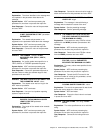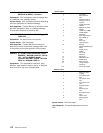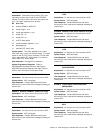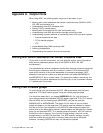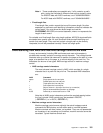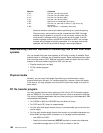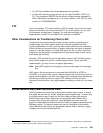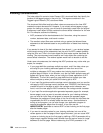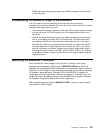
Appendix A. Helpful Hints
When using ACIF, the following topics may prove to be helpful to you:
Working with control statements that contain numbered lines (OS/390 or MVS,
VM, VSE environments only)
Understanding how ACIF processes fonts
Placing TLEs in named groups
Working with file transfer and AIX (AIX environment only)
Understanding how ANSI and machine carriage controls are used
Understanding common methods of transferring files to AIX from other systems
– Physical media such as tape
– PC file transfer program
– FTP
Invoke Medium Map (IMM) structured field
Indexing considerations
Concatenating the resource file and the document.
Working with control statements that contain numbered lines
(If you work in the AIX environment, you may skip this section, as the information
about control statements pertains only to the OS/390 or MVS, VM, VSE
environments.)
You sometimes can receive unexpected results when data set names are continued
and the control statements have line numbers in columns 73-80, because ACIF
reads all 80 columns of the control statements for processing purposes. (ACIF
attempts to use the line number as a data set name, and issues MSGAPK451S
and MSGAPK417I with a numeric value.) To resolve this problem, remove any line
numbers from the control statements and rerun the job, or use a comment indicator
(“/*”) before each line number.
Placing TLEs in named groups
To avoid having your job terminated by ACIF, IBM recommends that you place
page-level TLEs inside named groups, using one named group per page.
You should be aware that if you request INDEXOBJ=ALL for a job that has an
input data set containing composed (AFPDS) pages, page-level TLEs (TLE records
after the AEG) and no named groups (BNG/ENG), your job may end with
MSGAPK410S or MSGAPK408S. The reason for this action is that no named
groups are present, and the page-level TLE records must be collected in memory
until the end of the input document or file. MO:DCA index structures contain the
extent (size) of the object being indexed. Indexed objects are delimited by a named
group (or end document-EDT). If no named groups are present, ACIF will continue
to build the index in memory. If the input file is large enough, there will not be
enough memory, and ACIF will terminate. The ACIF memory manager currently
limits the number (but not the size) of memory blocks that can be allocated;
therefore, increasing REGION size may not alleviate the problem.
Copyright IBM Corp. 1993, 1999 179



